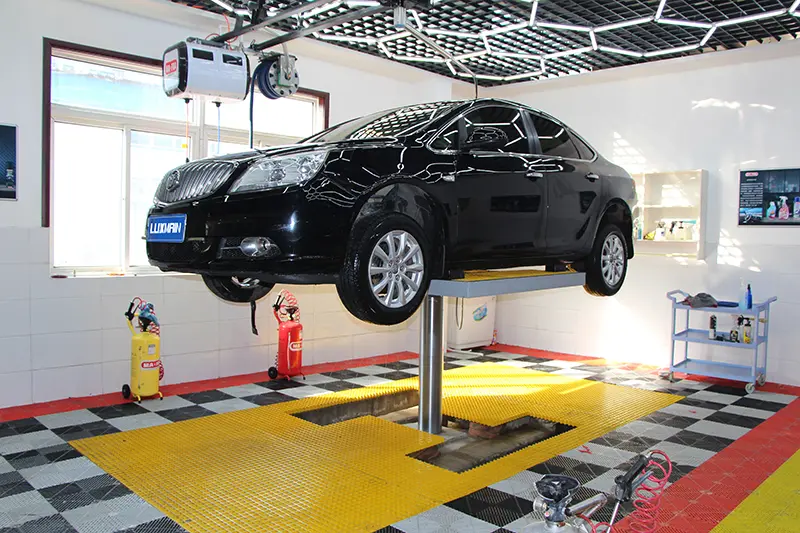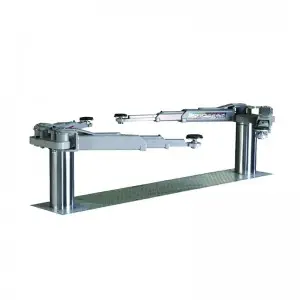Alternating Current (AC) series circuits are fundamental components in the field of electrical engineering and physics. They play crucial roles in various applications, from powering household appliances to sophisticated industrial machinery. Understanding the AC series, its characteristics, and its applications is vital for engineers, electricians, and anyone involved in electrical work. In this article, we will delve into the concepts associated with AC series circuits, discuss their significance, and explore their various applications in modern technology.

Exploring the Importance and Applications of AC Series in Electrical Engineering: From Theoretical Foundations to Practical Implementations
Understanding AC Series Circuits
An AC series circuit is a type of electrical circuit that consists of various components—such as resistors, inductors, and capacitors—connected in a single path (or series) through which alternating current passes. Alternating current is characterized by the fact that its voltage and current change direction periodically, usually following a sinusoidal waveform. This is different from direct current (DC), where the flow of electric charge is unidirectional.

Exploring the Importance and Applications of AC Series in Electrical Engineering: From Theoretical Foundations to Practical Implementations
In a series circuit, the same current flows through all components, but the voltage across each component can vary depending on its impedance. The total impedance (Z) of an AC series circuit is the vector sum of the resistance (R), inductive reactance (XL), and capacitive reactance (XC). This relationship is often represented as follows:
\[ Z = \sqrt{R^2 + (X_L – X_C)^2} \]
Characteristics of AC Series Circuits
1. **Impedance**: One of the most significant characteristics of AC series circuits is their impedance. Unlike DC circuits, where resistance is the primary factor influencing the flow of current, AC circuits are influenced by resistance and reactance. Reactance arises from inductors and capacitors, and it varies with the frequency of the AC signal.
2. **Phase Relationships**: In AC circuits, the voltage and current can be out of phase with each other due to the presence of inductance and capacitance. The phase difference affects the power factor of the circuit, which is the cosine of the phase angle between the voltage and current waveforms. Understanding the phase relationships is essential for efficient power delivery in AC circuits.
3. **Resonance**: AC series circuits can exhibit resonance under certain conditions, particularly when inductive and capacitive reactance are equal. Resonance occurs at a specific frequency called the resonant frequency, leading to increased voltage and current in the circuit. This phenomenon has practical applications, such as tuning circuits in radios.
Applications of AC Series Circuits
AC series circuits have a wide range of applications across different fields:
1. **Household Appliances**: Many common household appliances, such as refrigerators, washing machines, and air conditioning units, utilize AC series circuits for their operation. Understanding these circuits helps ensure their efficient functioning and troubleshooting.
2. **Lighting Systems**: AC series circuits are extensively used in lighting systems. For instance, in series-connected string lights, if one bulb fails, the entire circuit may go out. This characteristic can be advantageous in specific applications where uniform brightness is desired.
3. **Motors and Transformers**: Electric motors and transformers rely on AC series principles for their operation. Motors, especially induction motors, operate on the principle of magnetic fields and impedance. Transformers use AC series circuits to transfer electrical energy between different voltage levels while minimizing power losses.
4. **Signal Processing**: In telecommunications and audio applications, AC series circuits play a critical role in signal processing. Filters and amplifiers frequently use AC series characteristics to shape and manage signals effectively.
5. **Measurement and Testing**: Instruments used for measuring electrical parameters, such as oscilloscopes and multimeters, often apply AC series circuit principles to analyze voltage, current, and phase relationships.
Conclusion

Exploring the Importance and Applications of AC Series in Electrical Engineering: From Theoretical Foundations to Practical Implementations
In summary, AC series circuits are a cornerstone in electrical engineering, underpinning many aspects of our daily lives and technological advancements. By understanding the theoretical foundations and practical implications of these circuits, engineers and technicians can develop and maintain systems that operate efficiently and effectively. As technology continues to evolve, the role of AC series circuits will undoubtedly remain significant, making it essential for professionals in the field to stay informed and skilled in this area.quickjack portable car lift



